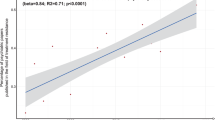Abstract
In controlled clinical trials, each of several prognostic factors should be balanced across the trial arms. Traditional restricted randomization may be proved inadequate especially with small sample sizes. In psychiatric disorders such as obsessive compulsive disorder (OCD), small trials prevail. Therefore, procedures to minimize the chance of imbalance between treatment arms are advisable. This paper describes a minimization procedure specifically designed for a clinical trial that evaluates treatment efficacy for OCD patients. Aitchison's compositional distance was used to calculate vectors for each possibility of allocation in a covariate adaptive method. Two different procedures were designed to allocate patients in small blocks or sequentially one-by-one. Partial results of this allocation procedure as well as simulated ones are shown. In the clinical trial for which this procedure was developed, the balancing between treatment arms was achieved successfully. Simulations of results considering different arrival order of patients showed that most of the patients are allocated in a different treatment arm if arrival order is modified. Results show that a random factor is maintained with the random arrival order of patients. This specific procedure allows the use of a large number of prognostic factors for the allocation decision and was proved adequate for a psychiatric trial design.
Similar content being viewed by others
Article PDF
Author information
Authors and Affiliations
Corresponding author
Rights and permissions
About this article
Cite this article
Fossaluza, V., Diniz, J., Pereira, B. et al. Sequential Allocation and Balancing Prognostic Factors in a Psychiatric Clinical Trial. Nat Prec (2008). https://doi.org/10.1038/npre.2008.2102.1
Received:
Accepted:
Published:
DOI: https://doi.org/10.1038/npre.2008.2102.1



